RPA Tools
RPA tools are the software that helps users to configure various tasks to get automated. Most of the organizations have periodic and repetitive tasks such as data entry, data extraction, report generation, etc. These tasks are manually performed on the software by the employees. Such repetitive tasks can be easily automated with the help of bots. The software that utilizes bots for performing automation is called the RPA Tool
Some popular RPA tools are described below:
UiPath
UiPath is a highly extensible Robotic Process Automation tool that helps to automate desktop or web applications. It offers global enterprises to design and deploy a robotic workforce for their organizations.
The best thing about UiPath is that it includes a community edition that comes with drag and drop feature. So, the users do not need programming knowledge to automate the tasks using UiPath. The community edition is free for the people who want to learn, practice, and implement RPA.
Features
- It provides multiple hosting options, such as cloud environments, virtual machines, and terminal services.
- It supports a high range of web and desktop applications.
- It supports the auto-login feature to run bots.
- It includes scrapping solution which works with .Net, Java, Flash, PDF, Legacy, SAP, with maximum accuracy.
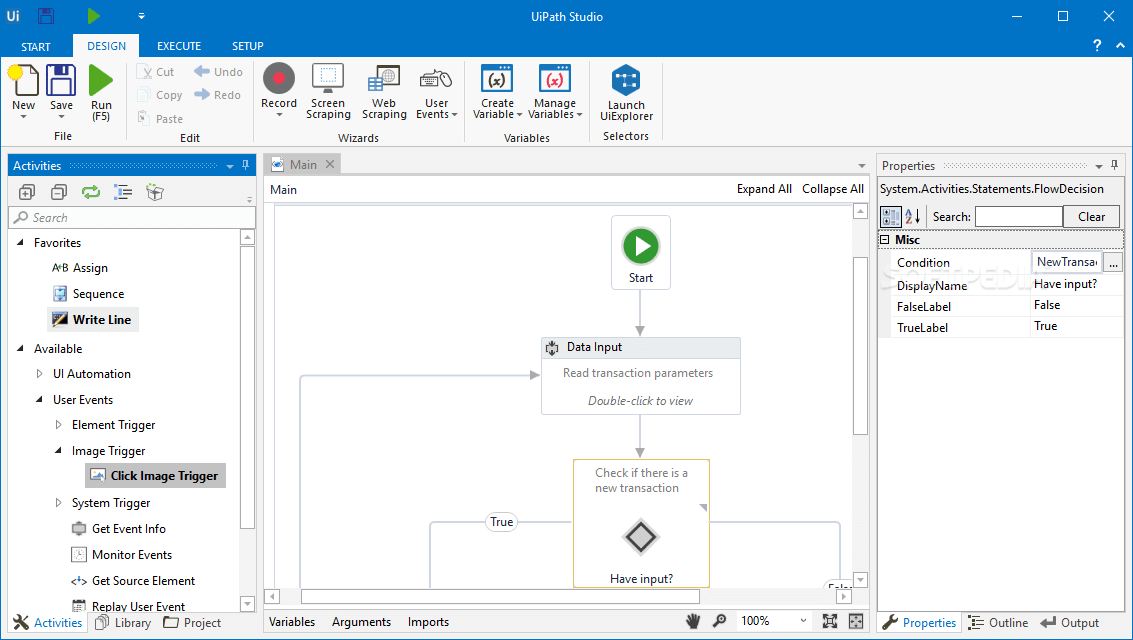
Blue Prism
Blue Prism is an RPA Tool that provides a virtual workforce to the organizations. It helps organizations to automate manual, repetitive, and rule-based business processes in an agile and cost-effective manner. It includes drag and drop support to automate the tasks.
Features
- It is platform-independent so that it can be used on any platform.
- It contains robust features like load balancing, data encryption, and end-to-end auditing. Thus, every change is audited.
- Blue Prism also supports automation of codes written in Mainframe, Java, Windows applications, and even web-based applications.
- It supports all major cloud platforms, like Microsoft Azure and Amazon AWS. So, users can manage most of the tasks centrally.
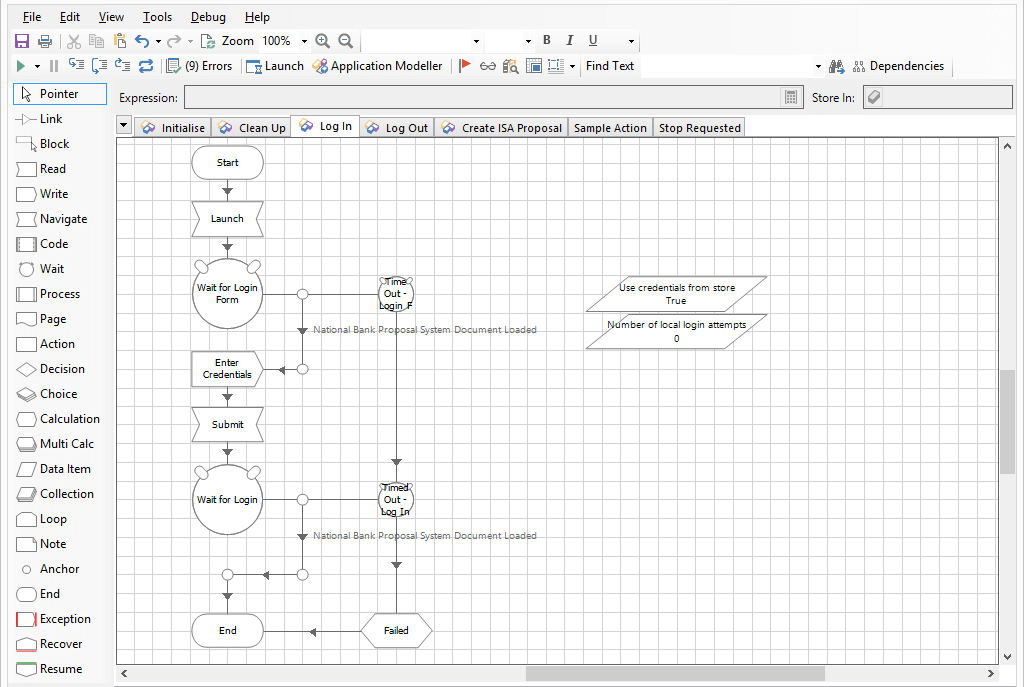
Automation Anywhere
Automation Anywhere is one of the popular RPA vendors that offers powerful and user-friendly capabilities to automate any complex business process. This tool is a combination of all the core functions. It combines RPA with intellectual elements like language understanding and reading any unstructured data.
Automation Anywhere is a web-based administration system that provides control to run and manage end-to-end automated business tasks for companies. It allows automating a broad range of tasks, from basic windows configuration steps to the ultimate networking and remote database processes.
Features
- It provides easy integration with different platforms.
- It provides Bank-grade security through authentication, encryption, and credentials.
- It distributes tasks to multiple computers and rapidly automates complex and complicated tasks.
- It offers scriptless automation.
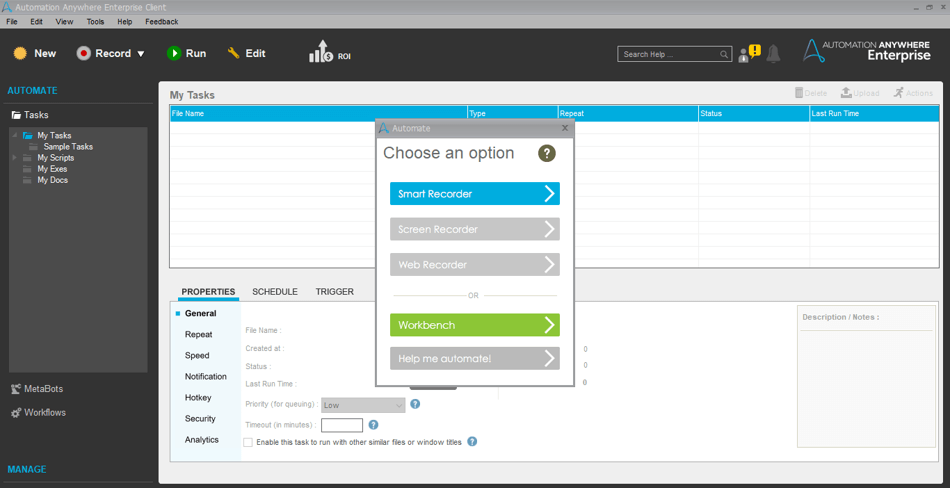
Pega
Pega is an RPA tool that can be used to automate the routine tasks which are repeated in a workflow. It adds the ability to automate tasks using the UI of existing applications. It can be beneficial to speed up manual tasks by automating user actions.
Features
- It provides a cloud-based solution.
- It helps in the deployment of the solutions to the customers.
- It captures insights at the desktop. It gets details of how work gets done.
- It does not store any execution data in a database. Everything gets stored in memory.
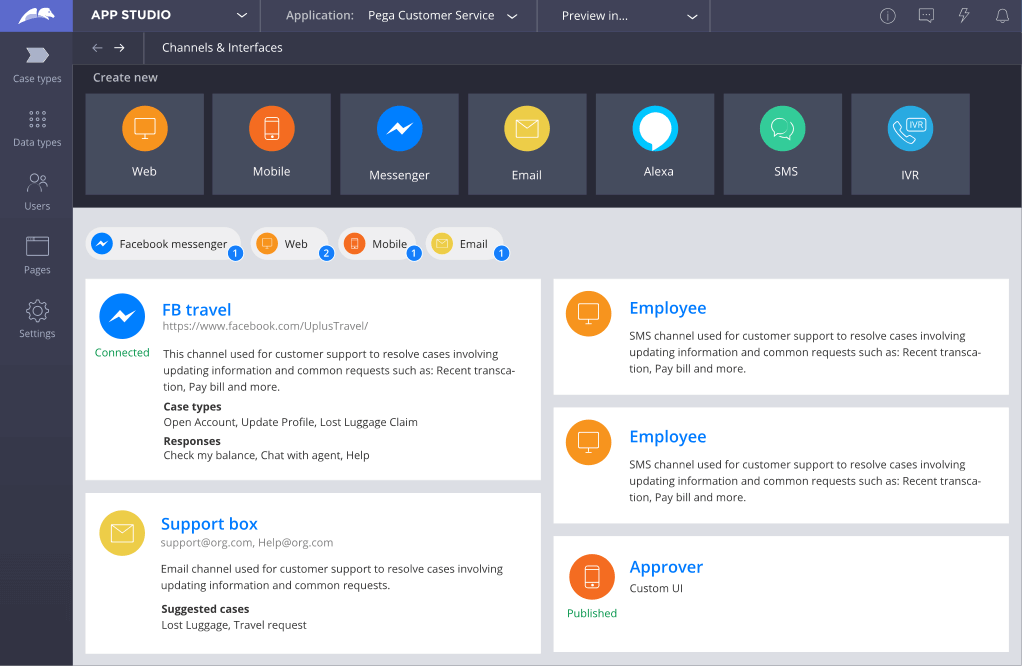
WorkFusion
WorkFusion is a SaaS (Software-as-a-Service) cloud computing platform. It automates the monitoring of data feed and helps you to manage crowd-sourced workers from global talent markets.
WorkFusion uses statistical quality control to ensure the accuracy of the work output.
Features
- It can collaborate with multiple users across different workstations.
- It supports quick start / stop automation, just by pressing a button.
- It also has a drag and drop feature.
- It allows organizations to digitize their operations and enhance productivity.
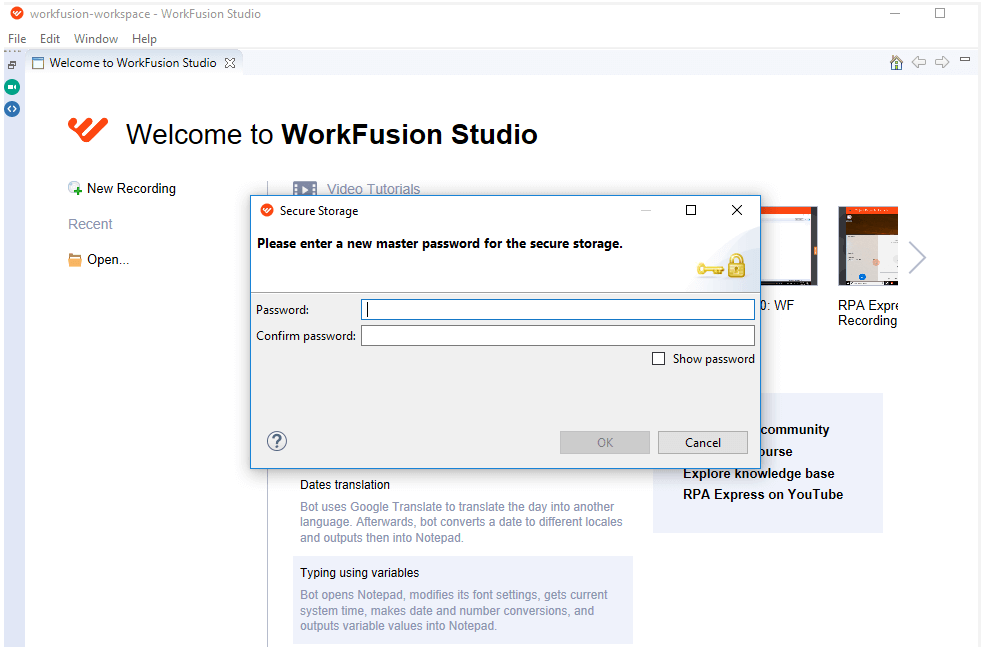
Jacada
Jacada is also one of the leading RPA tools. It helps in Desktop Automation and allows organizations to automate time-consuming, error-prone, and repetitive tasks. It supports in increasing accuracy, productivity, and customer satisfaction.
This tool is widely used for creating communication centers and customer services.
Features
- It includes hybrid RPA capabilities that combine attended and unattended bots.
- It provides an unparalleled level of flexibility for automated processes handling.
- It reduces the average handling time for organizations.
- It helps in increasing first call resolution (or instant resolution).
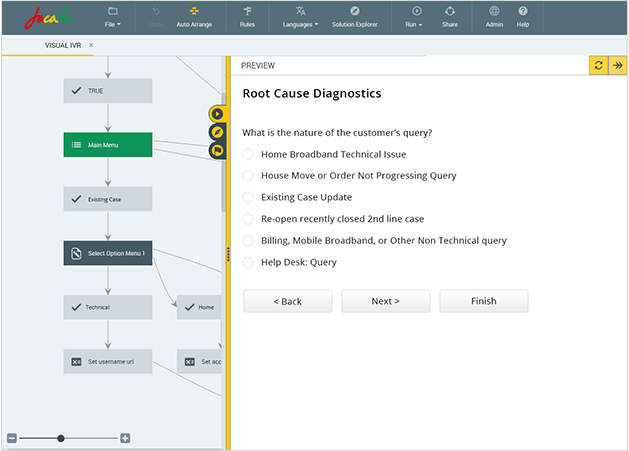
WinAutomation
WinAutomation is a powerful, robust, and easy to use windows-based desktop automation tool that allows the development of software robots. It provides enterprise-grade security and controls.
This tool can fill web forms, extract data, and transfer the same data from one application to another.
Features
- It provides easy integration with leading third-party applications.
- It supports parallel execution during testing.
- It includes image and optical character recognition.
- It requires minimal coding for the development of bots.
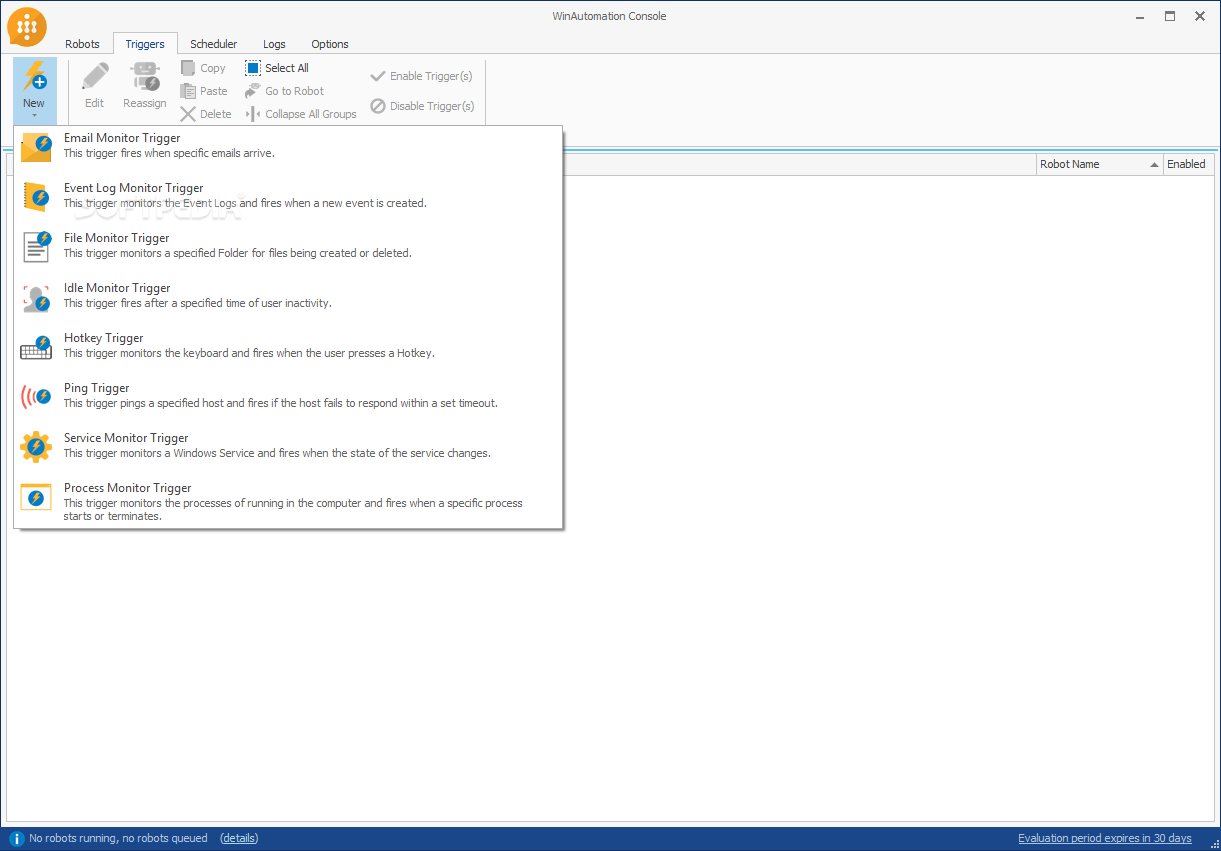
NICE Systems
The NICE system is an intelligent RPA tool which is also known as NEVA (Nice Employee Virtual Attendant). It operates on both the cloud and on-premise business software. With the help of this tool, a variety of tasks can be executed independently without human intervention. It helps employees to perform repetitive tasks.
It allows businesses to make accurate inferences with the help of high-level analytics of structured and unstructured data.
Features
- It supports both attended and unattended automation.
- It is ideal for banks, Finance, HR, etc.
- It provides increased customer satisfaction and productivity.
- It automates ordinary tasks and ensures compliance adherence.
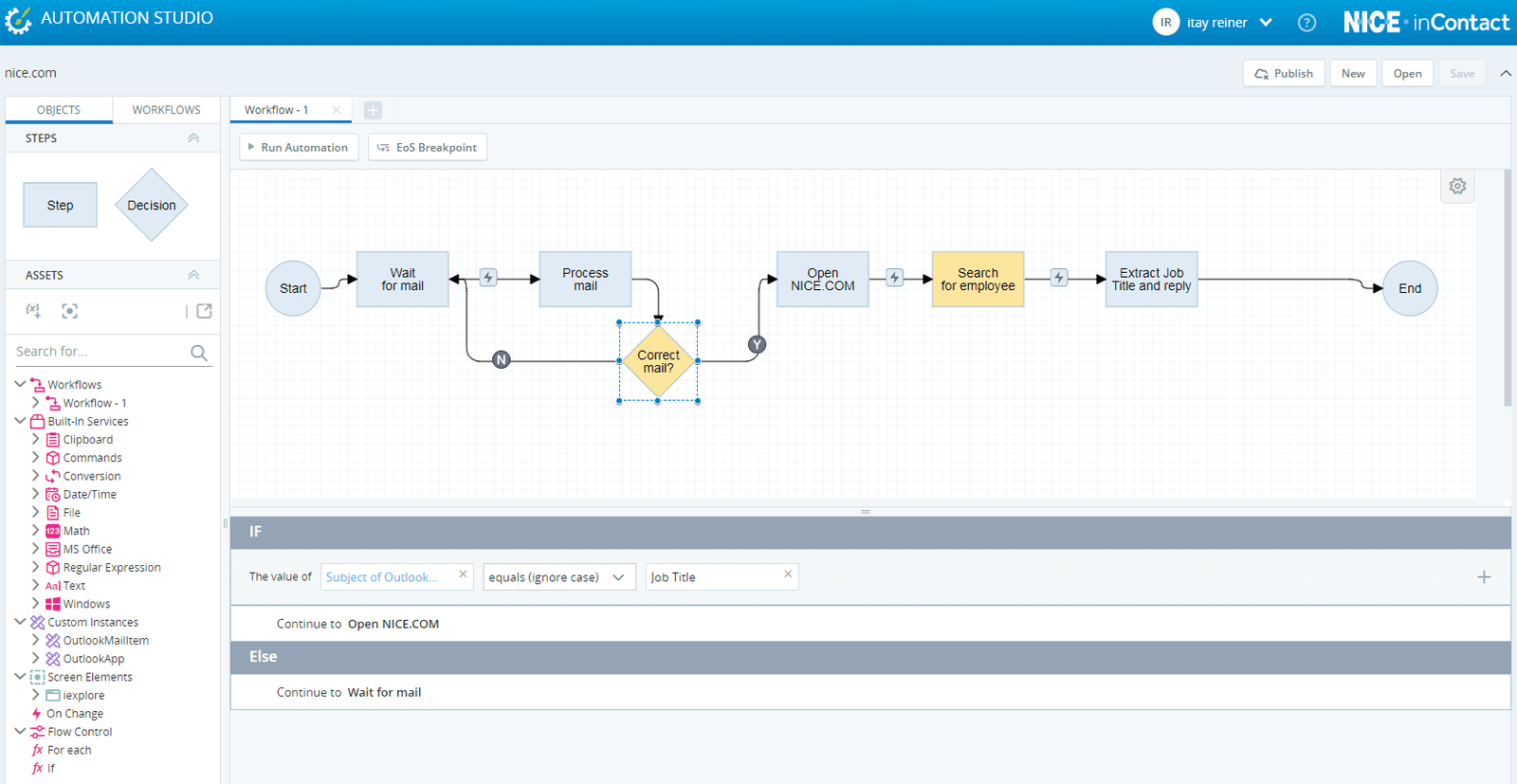
Contextor
Contextor is an integrated development environment used for a robotic automation process. It offers a complete customer view, online help, and exchange the data between two or more applications.
Features
- It helps in configuring robots through a drag & drop, and point & click approach.
- It can monitor the processes executed on the workstation.
- It can discover and recognize the target applications.
- It can maintain existing projects and add new features.
In the present time, there are many more vendors who are providing RPA Tools. However, the leading tools in the RPA market are UiPath, Blue Prism, and Automation Anywhere. These tools are most widely used in organizations for various purposes.
Core Functionalities of RPA Tools
Following core functionalities should be present in any RPA tool:
- A software robot should be able to interact with other systems either through Screen Scraping or API Integration.
- A software robot should be capable of making decisions and determine its actions based on inputs gathered from other systems.
- A software robot should have an interface to program the other robots.
Choosing the right RPA Tool
As we have seen, there are lots of RPA tools, but the question is which tool should we choose. Following are some parameters which should be considered before choosing the RPA tool:
Technology
The RPA tool must be platform-independent and should support all kinds of applications so that the organization will be able to perform their routine tasks outside the local desktops.
There are some other important technologies (i.e., screen scraping, scalability, cognitive capabilities, etc.) that should be available in the RPA tool.
Scalability
One of the important parameters of the RPA tool is scalability. There should be an option to expand the robotic workforce as per the requirements. RPA tool should support expansion for either no extra or minimal cost.
Security
Security is an important parameter to be considered before the selection of the RPA tool. Since the software robots access and manage private data, the organization should check all the security features of the tool. They are required to measure all the security controls before the implementation of RPA. Otherwise, the system may become accessible to external malicious attacks. It can cause misuse of confidential data, privacy issues, and other security concerns.
Total Cost of Ownership
The total cost of ownership is considered as another important parameter that should be evaluated before choosing the RPA tool. It depends on different factors such as initial setup cost, vendor fees, repetitive license fees, cost of implementation, maintenance, and more. Because the organizations usually prefer to start small and then scale, that’s why the evaluation of the cost of the RPA tool with the company’s RPA roadmap in mind is necessary.
Ease of Implementation
The selection of the RPA tool must include easy and quick integration as per the business requirements. It is necessary to check the compatibility with existing legacy systems to enable smooth transition after the implementation.
Ease of Use & Control
The RPA tool should be flexible and easy to use for performing the automation process. There should be options that can be controlled easily. It is better to use such an RPA tool, which requires less training and can be operated by users who lack knowledge in programming.
Vendor Experience
Choosing an experienced vendor will drastically improve the speed of implementation and reduce the work required to implement RPA software.
Maintenance & Support
It’s always good to choose such RPA providers who provide strong vendor support to their clients. A good vendor support helps in getting technological innovations, smoother deployments, better training, and certifications, etc.
Quick Deployment
The RPA tool should be able to help the user by interacting with applications which is available at the presentation layer. It also supports the user by validation, screens, and business rules, as they all are presented through a virtual desktop.
